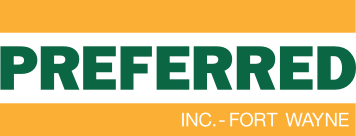Abrasive Blasting
Quickly remove paint, dust, and contaminants from surfaces.
Our team uses abrasive blasting to remove coatings, corrosion, and contaminants, preparing surfaces for new paint or coatings. This surface treatment process strengthens the material, improves adhesion, and ensures a cleaner, more durable finish. Abrasive blasting is an essential step in surface preparation that results in long-lasting and refreshed surfaces ready for painting. Learn more about the different techniques of abrasive blasting and their ideal applications.
- Coal Slag - Using a byproduct of coal combustion as an abrasive material to clean or prepare surfaces. This rugged, heavy-duty abrasive is highly effective for removing rust, paint, and other contaminants from steel, concrete, and other tough surfaces. It’s commonly used for industrial cleaning, surface preparation before coating, and restoring equipment or structures. Coal slag is known for its efficiency and durability, making it ideal for heavy-duty applications, though care should be taken to manage its dust and environmental impact.
- Solvent Degreasing - Solvent degreasing is used to clean metal parts before painting and to support other processes, such as electroplating. A specialized machine transforms soap into foam, which is carefully sprayed onto surfaces and then rinsed off. This method can be applied to both interior walls and machinery.
- Dry Ice Blasting - Dry ice is solid carbon dioxide and is commonly used in various applications, such as keeping produce cool during transport. However, it can be hazardous to handle, so it's important that employees avoid direct contact with it. Dry ice is primarily used on ceilings and machinery to remove loose paint.
- Glass Bead - Using small, spherical beads of glass as the abrasive material to gently clean and finish surfaces. This method is often used to achieve a smooth, matte finish without damaging the underlying material. It is ideal for delicate surfaces like aluminum, stainless steel, and other metals, as well as for cleaning or polishing glass and plastic components.
- Sandblasting - Sandblasting is the most abrasive method of surface preparation, effective for cleaning both indoor and outdoor walls and ceilings. It's particularly effective at removing paint, especially from concrete surfaces, and can also be used on tanks.
- Soda Blasting - Soda blasting involves propelling sodium bicarbonate particles at a surface using compressed air, providing a gentle, abrasive cleaning method. The absorbent nature of the particles allows them to effectively remove stubborn contaminants without damaging the underlying material. It’s safe for delicate surfaces such as plastics, chrome, and glass. A high-pressure wand is used for precise control, ensuring detailed cleaning. While it’s the best option for more sensitive equipment and machinery, it can be slower than other methods. If protecting specific equipment is a priority, soda blasting is the ideal choice.
- Steam & High Pressure - Pressure washing is commonly used to prepare exterior surfaces for painting. Many pressure washers also have steam settings, which are designed for cleaning machine surfaces. Dry vapor, a high-temperature, low-moisture steam, is used to sanitize surfaces and remove build-up that could impact performance.
- Walnut Shell - Using crushed walnut shells as the abrasive medium for cleaning and surface preparation. This eco-friendly, non-toxic material is ideal for more delicate tasks where a gentler touch is needed, such as cleaning automotive parts, delicate machinery, or historical restoration projects. Walnut shells are effective at removing rust, paint, and other contaminants without damaging the underlying surface, making them a popular choice for surfaces like wood, aluminum, and fiberglass.
- Water Blasting - Water blasting uses high-pressure water to clean surfaces, offering greater power than standard pressure washing. It removes a thin layer of the surface material along with dirt and grime, helping to create a more uniform surface for applying new materials. This method is commonly used to strip loose paint from exterior siding, tanks, and concrete blocks.

